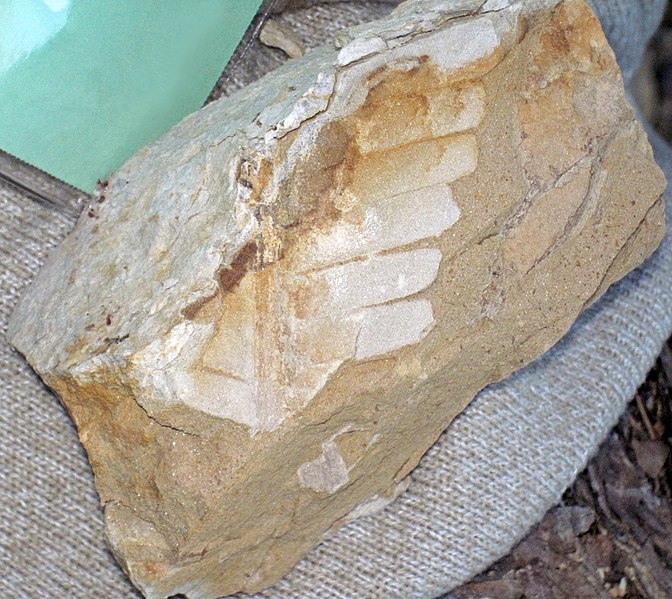|
We’re all pretty aware of pesky beetles feeding on our garden plants, or caterpillars chomping down on farmer’s crops. Usually, humans get pretty annoyed when bugs feed on their food. But recently, scientists were able to use insect feeding to help them trace the evolution of plant ‘sleeping’ movements. Did you know that plants slept? Did you know that we could use insect clues to learn more about the evolution of that phenomenon? We didn’t either! Read on to find out more about a pretty unusual approach scientists took to solve a nagging prehistoric plant puzzle. Plants Need Naps, Too!Plants can move in some surprising ways. They move in response to environmental triggers, such as wind, light, gravity, humidity, or contact. In addition, some plants follow a circadian rhythm (repeated every 24 hours) that dictates ‘sleeping’-type movements called nyctinasty. Scientists have been interested in nyctinasty, or plant ‘sleeping behavior’, for quite some time. Charles Darwin was so interested in plant movement; he wrote an entire book about it. Although in this seminal work he clearly noted that plants folded their leaves when they went to “sleep”, scientists continued to wonder, “When did this behavior evolve, and why?” Interesting questions, but as an avid reader of an insect blog, you’re probably wondering what questions about plant naps (Bug Lessons’ new moniker for “cat naps”) have to do with bugs. Well, in a recent study, scientists admitted that they used a pretty unorthodox method to investigate the history of plant sleeping behavior. Wouldn’t you know, it involves our favorite six-legged creatures. For Once, Insect Damage Proves UsefulThanks to Darwin, scientists knew that legumes had more ‘sleepy’ species than all other plant families combined. He also identified the organ that controlled sleep movements in plants. However, questions still remained regarding the origin, history, evolution, and benefit of sleep movements because there was no fossil evidence for this process the fossil record. It was impossible to tell if fossilized plants were actually sleeping, or, if they simply died and shriveled up prior to becoming fossilized. Recently, though, scientists documented sleeping behavior in fossilized plants by looking at insect feeding damage on the fossilized leaves from the upper Permian of China. Based on the age of the fossils, scientists could conclude that plants were taking naps as long ago as the late Paleozoic era (250 MYA). Other notable events that occurred in the Paleozoic era included the formation of Pangea and the Appalachian Mountains.  Plant fossils are typically incomplete and they are of course static. This makes it difficult to understand what exactly happened during the period of fossilization. That is, without having more information (such as details re: plant-feeding damage). (Image Credit: James St. John, Image Source: Flickr) The lead author of the research study, Dr. Feng, was able to figure out that prehistoric insects fed on sleeping leaves based on correlations with insect-damaged leaves he collected in 2013. In the modern (2013) plant samples, Feng noted that insects cut symmetrical holes in leaves because they were feeding on samples when plants were asleep, i.e., when the leaves were folded. Dr. Feng saw identical symmetrical holes in the fossilized leaves. After combing through hundreds of fossil samples, Dr. Feng and his colleagues were able to conclude that i) plant sleeping behavior definitely occurred prehistorically, ii) plant sleeping evolved independently in lots of different plant groups and iii) the pervasiveness of the behavior indicates that it serves some benefit for plants. The study is innovative not just because authors used insects in a unique way, but also because the findings prove that we can identify organismal behaviors, not just structures, in the fossil record. This opens up fossil samples to all sorts of new investigations that were previously untapped. And all because insects are continuing to do what they’ve always done—eat a lot of plants! ConclusionsObviously, fossils are not very dynamic. It is difficult to tell what was happening at the time of fossilization for many organisms. However, we know that insects have been around for millions of years, and they interacted with many different organisms. It will be interesting to see what else we will glean from other fossils based on how insects interacted with them. Hopefully, this gives the masses as well as other scientists a deep appreciation for the sometimes very unexpected roles that insects can play in terms of scientific discovery.
0 Comments
Your comment will be posted after it is approved.
Leave a Reply. |
Bug Lessons BlogWelcome science communicators and bug nerds!
Interested in being a guest blogger?
Archives
November 2023
Categories
All
|
